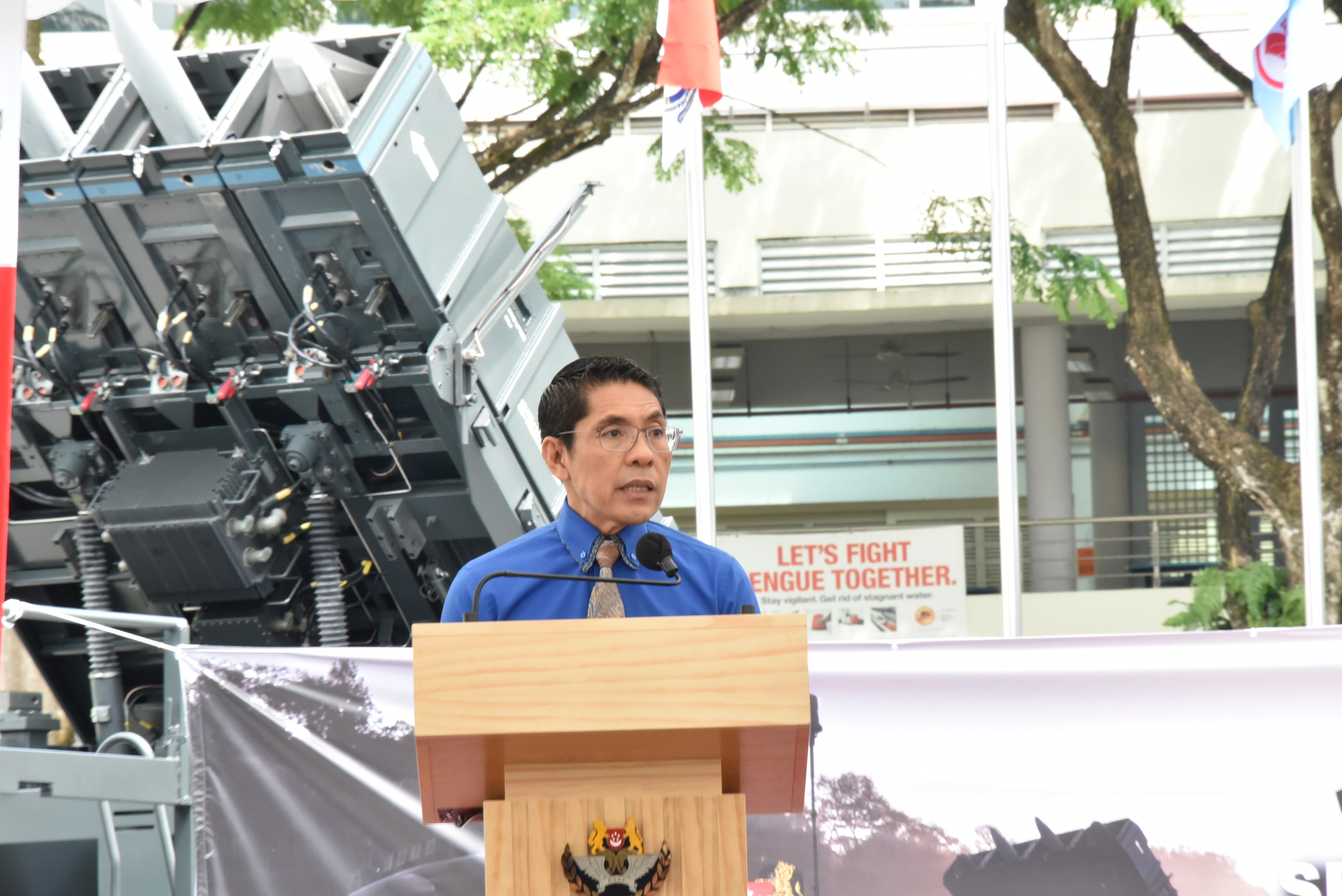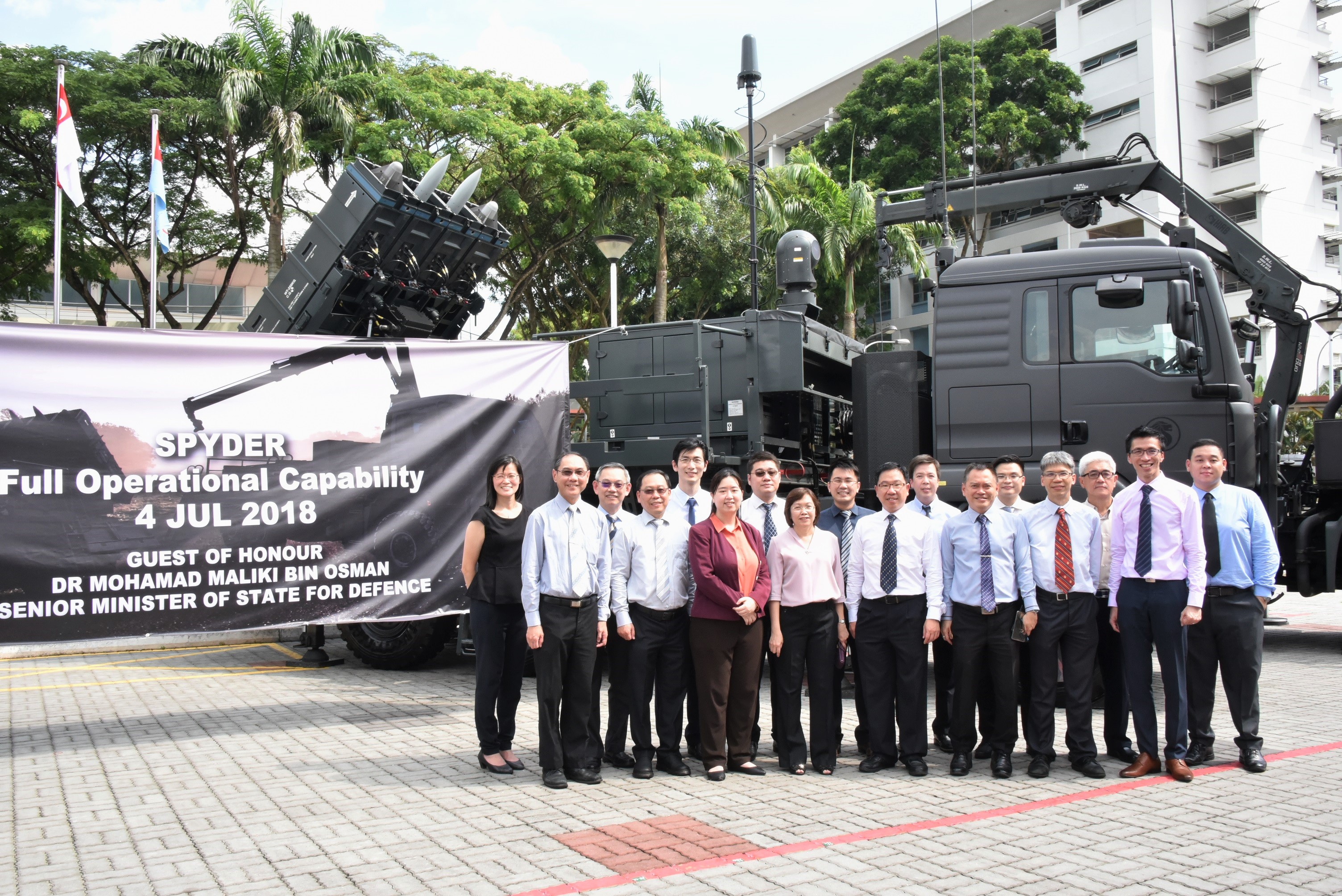08 Jul 2018
On 4 Jul 2018, Senior Minister of State for Defence Dr Mohamad Maliki Bin Osman officiated at a ceremony to mark the achievement of Full Operational Capability (FOC) status by the Republic of Singapore Air Force (RSAF)’s Surface-to-air PYthon-5 and DERby (SPYDER) Ground Based Air Defence system at Chong Pang Camp.
The SPYDER is part of the enhanced Island Air Defence (IAD) network, which is an island-wide networked system that brings together sensors, weapon systems, command and control elements, and decision-making tools to further strengthen Singapore’s air defence. As an all-weather air defence system, the SPYDER possesses anti-aircraft and anti-munition capabilities to effectively deal with a wide spectrum of aerial threats, and only requires four-man crew to deploy.

Speaking at the ceremony, Dr Maliki said: “The FOC of the SPYDER was a true team effort. Beyond 165 Squadron, many of our airmen and women from the Air Surveillance and Control Group and 9 Air Engineering and Logistics Group in the Air Defence and Operations Command, and also the scientists and engineers from DSTA, worked tirelessly to bring online new multi-mission sensors, combat management systems and to maintain them at a constant state of readiness. Integrating all the various systems, people, and processes into a fully operational capability was no mean feat.”

DSTA managed the acquisition of the SPYDER system and its integration with the IAD network. The multi-disciplinary team of defence engineers worked with the RSAF to design the architecture, manage the delivery, and conduct verification and validation tests on the networked SPYDER.
In delivering the SPYDER, the team developed robust methodologies to test the performance of its integration with the IAD network. For the tests, the team leveraged modelling and simulation combined with relevant hardware components at the DSTA Analytical Laboratory, allowing them to identify and resolve issues early, and hence minimise downstream risks in systems integration.
DSTA also developed a robust, resilient and flexible networked systems architecture to deliver the networked SPYDER capability. This Command and Control (C2) network allows the SPYDER to tap on an integrated air picture created by a wide array of sensors, for enhanced awareness. As a result, the SPYDER can respond faster and with greater precision to incoming threats. Being part of a network also makes it less prone to single points of failure, making it more robust.
Leading the DSTA team was Senior Programme Manager Tan Bing Wen. Reflecting on his experience, he said: “Work on the SPYDER system was both challenging and exciting. SPYDER is a complex system with vehicles and components – for example, while we acquired the SPYDER, we separately acquired the MAN truck which carries the SPYDER. There were engineering challenges we had to overcome, and we collaborated closely with the RSAF and industry partners to design solutions for the SPYDER’s deployment.”
